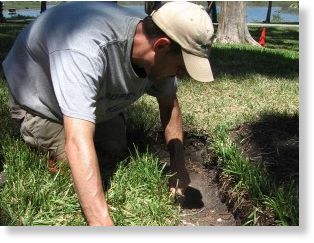
The archaeologists believe it could be the oldest stone building of Spain's colonial period and one of the largest mission churches built during that time in Florida.
Researchers from the Florida Museum of Natural History, located on the UF campus in Gainesville, discovered coquina stones and foundations indicating a structure some 27 meters (90 feet) long by 12 meters (40 feet) high, which would be "the only mission church made of stone," the university said in a communique.
The ruins were found at the place where the first Franciscan mission was built in Florida, called Nombre de Dios (Name of God), which remained active from 1587 until 1760.
"This is a truly exciting rediscovery of a long-lost building," Kathleen Deagan, a distinguished research curator emeritus of historical archaeology at the Florida Museum of Natural History, said.
St. Augustine is the oldest city in the United States and it is very possible that the ruins are from a church commissioned by the Spanish colonial governor of Florida in 1677, Deagan said.
Under the direction of the Catholic diocese of St. Augustine, the church was built in honor of Nuestra Señora de La Leche and Buen Parto (Our Lady of the Milk and Safe Delivery), and was erected in the 1650s.
After an English attack destroyed the church in 1728, the ruins were gradually buried and the place forgotten.



Reader Comments
to our Newsletter